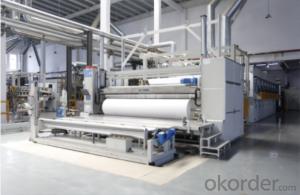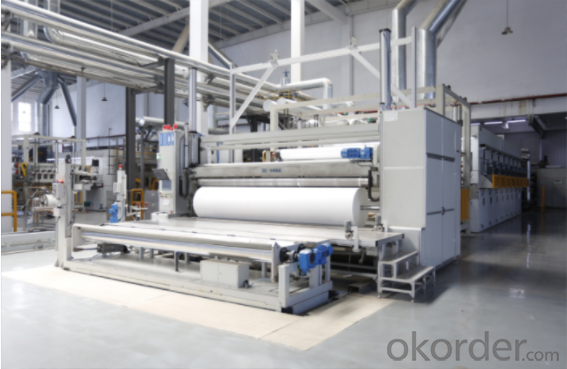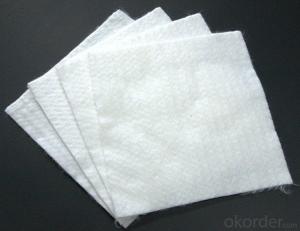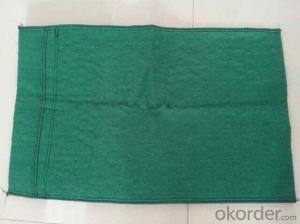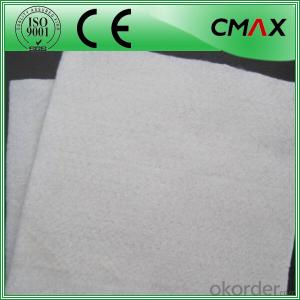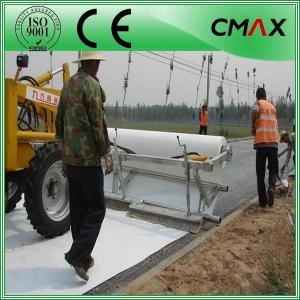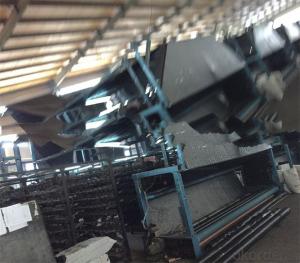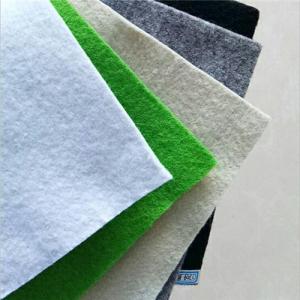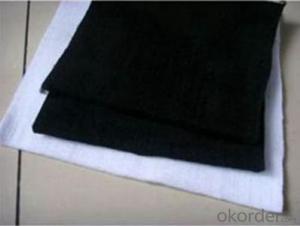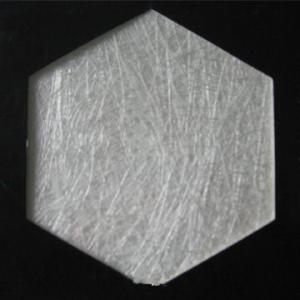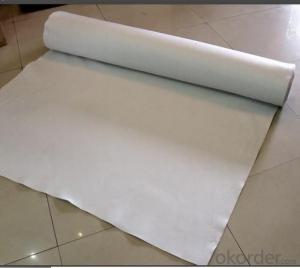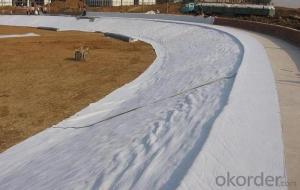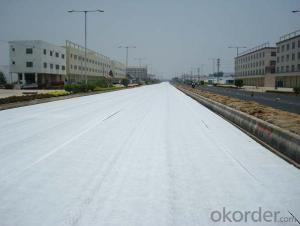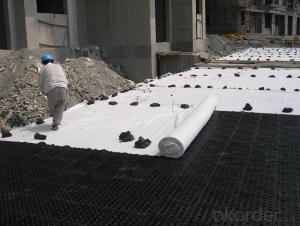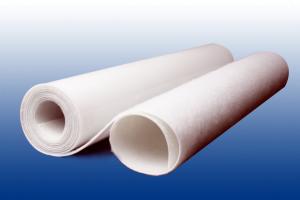Geotextiles Usa Polypropylene/Polyester Nonwovens Geotextile, Geosynthetic
- Loading Port:
- Shanghai
- Payment Terms:
- TT OR LC
- Min Order Qty:
- 5000 m²
- Supply Capability:
- 8000000 m²/month
OKorder Service Pledge
Quality Product, Order Online Tracking, Timely Delivery
OKorder Financial Service
Credit Rating, Credit Services, Credit Purchasing
You Might Also Like
Product Description
POLYPROPYLENE FILAMENT NEEDLE PUNCHED GEOTEXTILE
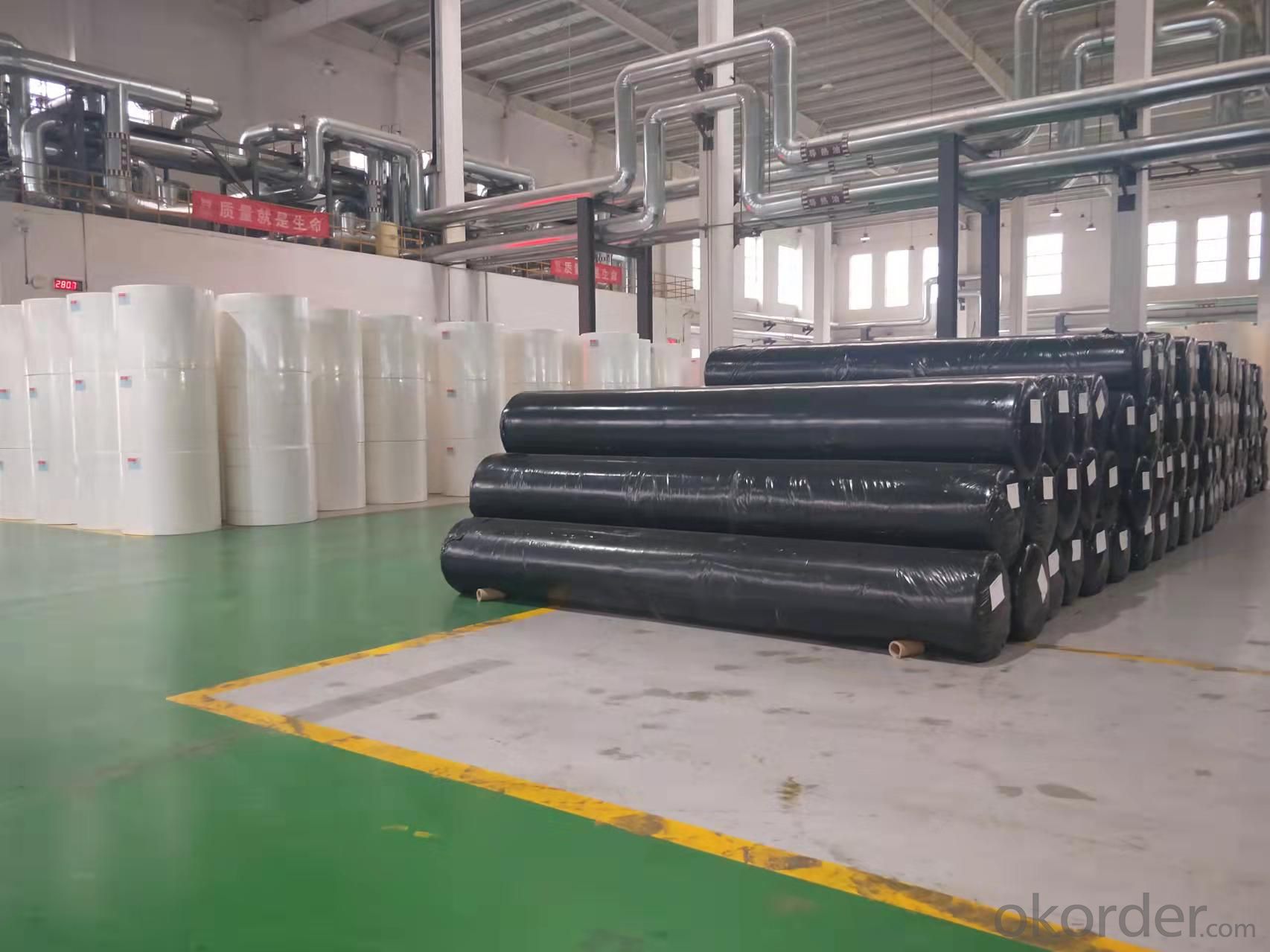
Product Introduction:
Using high-strength polypropylene slice as the main raw material, it is produced by non-woven technology and has the functions of isolation, reinforcement, protection, filtration, drainage, and buffering.
Product specifications: TDF100~1000, width 1m~6m., length according to user requirements.
Features:
The physical and mechanical properties are 2 to 3 times higher than that of conventional products. The proportion of products with the same gram weight is low; the acid and alkali resistance is excellent, the hot melt adhesion is good, and the wear resistance is strong. It is more suitable for CRTS/ slab ballastless track sliding layer system, which can reduce the interaction between the track system and the bridge surface.
Applications:
Polypropylene needle-punched non-woven geotextile is mainly used for the sliding layer between CRTS slab ballastless track and beam surface of passenger dedicated railway, and the isolation layer between CRTS slab ballastless track and friction. It can also be widely used Hydropower, highways, railways, ports, airports, sports venues, tunnels, beaches, reclamation, environmental protection and other fields play the role of isolation, filtration, drainage, reinforcement, protection, etc.
| Iterms | Test Method | Unit | TDF6 | TDF13 | TDF22 | TDF28 | TDF35 | TDF42 | TDF50 | TDF56 | TDF65 |
| Physical Properties | - | - | Continuous filament spunbond needle punched 100% polypropylene, UV stabilized | ||||||||
| Polymer | - | - | |||||||||
| UV resistance-Tensile strength retention | ISO 10319(GB/T 15788) | After three months outdoor aging,Strength Retention>70% | |||||||||
| Chemical resistance | ISO 12960(GB/T 17632) | No effect in the range of PH2-13 | |||||||||
| Tensile Strength | ISO 10319(GB/T 15788) | kN/m | 6.0 | 13 | 22 | 28 | 35 | 42 | 50 | 56 | 65 |
| Elongation at Max Tensile Strength | ISO 10319(GB/T 15788) | % | 50-120 | ||||||||
| CBR Puncture Resistance | ISO 12236(GB/T 14800) | N | 1000 | 2100 | 3200 | 4200 | 5500 | 6500 | 7600 | 8700 | 10000 |
| Trapezoid Tear Strength | ISO 9073-4(GB/T 13763) | N | 200 | 500 | 700 | 900 | 1100 | 1200 | 1300 | 1400 | 1600 |
| Fall Cone Penetration Aperture(dia) | ISO 13433(GB/T 17630) | mm | 34 | 27 | 20 | 17 | 14 | 11 | 9 | 7 | 5 |
| Equivalent Aperture(dry sieving)(O90) | GBT 14799 | mm | 0.3 | 0.2 | 0.11 | 0.1 | 0.07 | 0.07 | 0.06 | 0.05 | 0.05 |
| Vertical Flow Rate(50mm Spout) | ISO 11058(GB/T 15789) | l/m2/s | 40 | 40 | 40 | 35 | 25 | 15 | 15 | 10 | 10 |
| vertical permeability coefficient | ISO 11058(GB/T 15789) | m/s | 2×10-1 | 2×10-1 | 2×10-1 | 2×10-1 | 2×10-1 | 1.5×10-1 | 9×10-2 | 6×10-2 | 3×10-2 |
| In-plane Water Flow 20kPa | ISO 12958(GB/T 17633) | l/m.h | 2×10-4 | 8×10-4 | 1×10-3 | 1×10-3 | 1×10-3 | 1×10-3 | 1×10-3 | 1×10-3 | 1×10-3 |
| Mass Unit Area | ISO 9864(GB/T 13762) | g/m2 | 100 | 200 | 300 | 400 | 500 | 600 | 700 | 800 | 1000 |
| Thickness 2kPa | ISO 9863-1(GB/T 13761.1) | mm | 0.8 | 1.6 | 2.2 | 2.8 | 3.3 | 3.8 | 4.1 | 4.5 | 5.0 |
| Grip Strength | ASTM D 4632(GB/T24218.18) | N | 400 | 1000 | 1500 | 2000 | 2500 | 3000 | 3500 | 4000 | 5000 |
| Elongation at Grip Strength | ASTM D 4632(GB/T24218.18) | % | 50-120 | ||||||||
| Punchture Resistance | ASTM D 4833(GB/T 19978) | N | 170 | 350 | 520 | 650 | 800 | 950 | 1050 | 1200 | 1400 |
| Permeability | ISO 11058(GB/T 15789) | s-1 | 1.0 | 1.0 | 1.0 | 0.5 | 0.4 | 0.25 | 0.2 | 0.1 | 0.05 |
| Product Specifications (Width) | GB/T 4666 | mm | 4000-5500 | ||||||||
| Fiber Fineness | GB/T 10685 | dtex | 4-15 | ||||||||
- Q: Can geotextiles be used in stormwater detention systems?
- Yes, geotextiles can be used in stormwater detention systems. Geotextiles are commonly used in these systems to separate the soil and aggregate layers, to provide filtration and drainage, and to enhance the overall stability and performance of the system.
- Q: How do geotextiles improve the performance of geotubes?
- Geotextiles improve the performance of geotubes by providing reinforcement, filtration, and separation functions. They help to prevent soil erosion and retain sediment within the geotube, while allowing water to pass through. Additionally, geotextiles enhance the overall stability and durability of geotubes, ensuring their effectiveness in various applications such as coastal protection and dewatering.
- Q: How do geotextiles help with sediment control in construction sites?
- Geotextiles help with sediment control in construction sites by acting as a barrier to prevent soil erosion and the migration of sediment. They are placed on the surface of the soil, where they allow water to pass through while trapping sediment particles. This helps to retain the soil in place and prevent it from being washed away by rainwater or other erosive forces. Geotextiles also aid in filtration by capturing suspended particles and allowing clean water to drain through, thus preventing sediment-laden runoff from reaching nearby water bodies.
- Q: Characteristics of nonwoven geotextiles
- Non-woven geotextile has many advantages: 1) air permeability 2) filterability 3) insulation 4) water absorption 5) waterproof 6) stretch 7) not disheveled 8) feel good, soft 9) light 10) Can be restored 11) without the direction of the fabric 12) compared with the textile production of high productivity, production speed 13) low prices, can be mass production and so on. Disadvantages are: 1) Compared with the textile fabric strength and durability is poor; 2) can not be washed as other fabrics; 3) fiber arranged in a certain direction, so easy to split from the right angle and so on. Therefore, the improvement of the production method has been mainly focused on preventing the improvement of the division.
- Q: Geotextile what are the specifications of the ah?
- Geotextile is first divided into short wire geotextile and filament geotextile. Their specifications generally according to the weight to count, small equipment, geotextiles are mostly between 80g-380g, and now some mature domestic enterprises generally can do between 100g-1500g short wire and filament geotextile. How many grams of this can be customized between. It should be noted that the same specifications of the short wire geotextile price than the filament geotextile to 30% cheaper, but the technical strength index than the long geotextile cloth nearly 50%.
- Q: How do geotextiles help in soil stabilization?
- Geotextiles aid in soil stabilization by acting as a barrier, preventing the erosion of soil particles, improving soil structure, and providing reinforcement to the ground. They distribute loads evenly, reduce water flow velocity, and enhance soil filtration, thereby enhancing the stability and strength of the soil.
- Q: Will the HDPE geomembrane, non-woven geotextile re-examination to detect what project? Is there a basis for testing? Thank you, hurry! The The
- CBR top breaking strength, vertical permeability coefficient ,,
- Q: How to apply the geotextile of the retaining wall filter
- Our manufacturer, a professional construction team
- Q: How do geotextiles help in reducing the risk of slope failures?
- Geotextiles help in reducing the risk of slope failures by providing reinforcement and stabilization to unstable slopes. These materials are placed within the slope to increase its strength and prevent erosion. Geotextiles also help in promoting water drainage and filtration, which reduces the build-up of hydrostatic pressure within the slope. Overall, geotextiles enhance the stability of slopes and mitigate the potential for landslides or slope failures.
- Q: Geotextile price
- If you want to consult the price of geotextile, (I do not know you want to filament geotextile or short wire geotextile), first of all to determine what you need is to achieve the national standard or non-standard, followed by the specifications you want, mainly per square meter Weight, there is a need to contact
Send your message to us
Geotextiles Usa Polypropylene/Polyester Nonwovens Geotextile, Geosynthetic
- Loading Port:
- Shanghai
- Payment Terms:
- TT OR LC
- Min Order Qty:
- 5000 m²
- Supply Capability:
- 8000000 m²/month
OKorder Service Pledge
Quality Product, Order Online Tracking, Timely Delivery
OKorder Financial Service
Credit Rating, Credit Services, Credit Purchasing
Similar products
Hot products
Hot Searches
Related keywords
